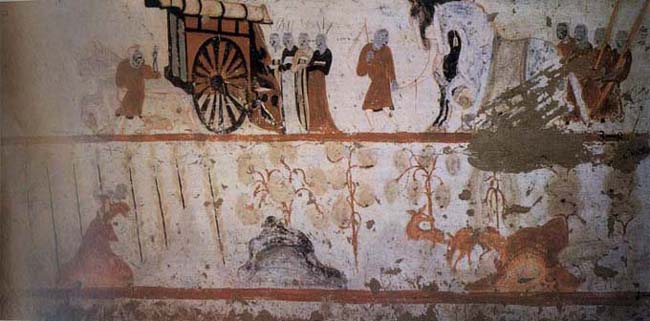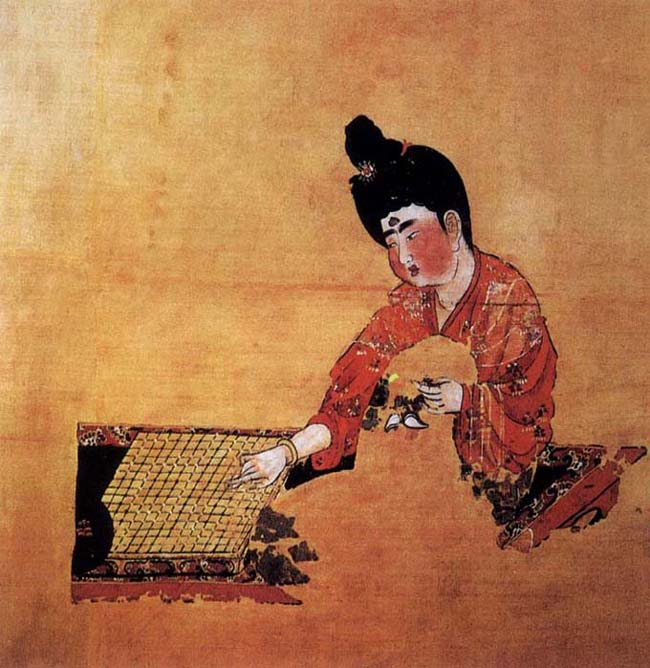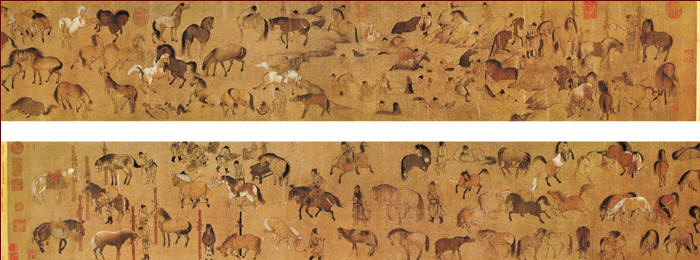History of Chinese Art from the Sui-Tang Dynasties
The period of the Sui (隋 , 581-618) and Tang (唐 , 618-907) dynasties marks a golden age of Chinese culture. This era saw the flourishing of painting, calligraphy, ceramics, and garden art, fueled by exchanges on the Silk Road and political stability.
Major Artistic Timeline
- 581: Reunification of China under the Sui, creating conditions for a cultural renewal
- 618: Advent of the Tang, beginning of a century of creative expansion
- 626-628: Foundation of the two great schools of calligraphy (书法 )
- Around 713: Perfection of the 唐三彩 (three-color) glaze
- 8th century: Peak of portrait painting and shanshui (山水 ) landscape painting
Artistic Revolutions
The cultured elite (文人 ) developed new pictorial techniques while imperial workshops perfected white porcelain. Garden art (园林 ) achieved unprecedented philosophical harmony, blending natural elements and human creations.
Masters of Painting and Calligraphy
- Yan Liben (阎立本 )
- Li Sixun (李思训 )
- Wu Daozi (吴道子 )
- Han Gan (韩干 )
- Wang Wei (王维 )
- Zhou Fang (周昉 )
- Han Huang (韩滉 )
- Li Zhaodao (李昭道 )
Cultural Heritage
This period saw the birth of:
- The first pieces of true porcelain
- The development of Chan Buddhism influencing aesthetics
- The synthesis of Northern and Southern styles
- The invention of rice paper for artistic creation
Artistic Treasures of the Sui-Tang

Characteristic landscape of the Sui Dynasty showing early interest in nature

"The Lady Playing Chess": an example of Tang court painting illustrating aristocratic life

"A Hundred Horses" (detail), masterpiece by Han Gan on silk (26.7 × 302.1 cm)
Techniques and Materials
Artists developed:
- The 泼墨 (splashed ink) technique
- Lead glazes for San Cai ceramics
- The use of gold and mineral pigments in painting
- The first theoretical treatises on landscape art
